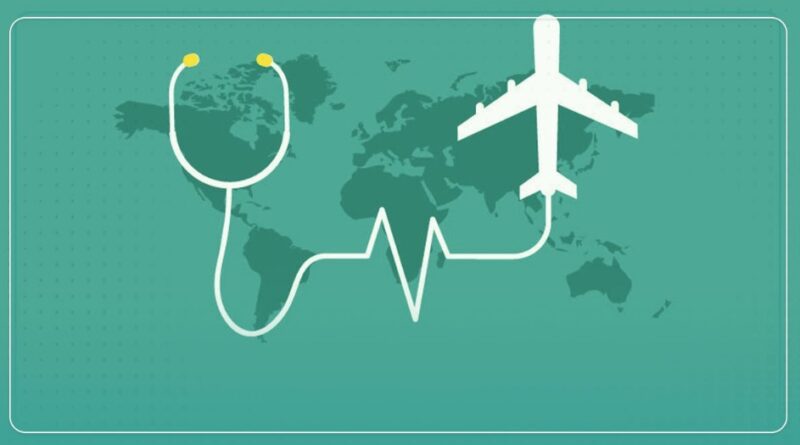Exploring the Benefits and Risks of Medical Tourism
Medical Tourism: A Global Health Movement
Medical tourism, the practice of traveling to another country to receive medical care, has grown significantly over the past few decades. This burgeoning industry is driven by several factors, including the rising cost of healthcare in developed nations, the increasing quality and availability of medical services in developing countries, and the desire for shorter wait times for procedures. Medical tourism offers numerous benefits, but it also poses challenges that need to be addressed to ensure safe and effective care for patients worldwide.
Factors Driving Medical Tourism
One of the primary reasons people opt for medical tourism is the high cost of healthcare in their home countries, especially in the United States, where medical expenses can be prohibitive. Procedures such as dental work, cosmetic surgery, orthopedic surgery, and even major operations like heart surgery can be performed at a fraction of the cost in countries like India, Thailand, Mexico, and Turkey. For example, a heart bypass surgery that might cost over $100,000 in the U.S. can be done for around $10,000 in India, inclusive of travel expenses.
Additionally, the quality of healthcare in many developing countries has improved dramatically. Hospitals and clinics in popular medical tourism destinations often boast state-of-the-art facilities and highly trained medical professionals, many of whom have received education and training in Western countries. These institutions are frequently accredited by international organizations such as the Joint Commission International (JCI), ensuring they meet rigorous standards of care.
Another compelling factor is the issue of wait times. In countries with public healthcare systems, patients can face long waits for non-emergency procedures. Medical tourism allows these patients to bypass these delays and receive timely treatment. This is particularly appealing for elective surgeries and procedures where waiting can significantly impact quality of life.
Request a free sample PDF Brochure: https://www.fortunebusinessinsights.com/enquiry/request-sample-pdf/medical-tourism-market-100681
Popular Destinations and Procedures
Several countries have emerged as leaders in the medical tourism industry. India is renowned for cardiac and orthopedic surgeries, Thailand for cosmetic and dental procedures, and Mexico for bariatric surgery and dentistry. Eastern European countries like Hungary and Poland have also become popular for dental and cosmetic surgeries due to their proximity to Western Europe and lower costs.
These destinations offer a range of procedures, from essential surgeries to elective treatments. Dental work, cosmetic surgery, fertility treatments, and weight loss surgeries are among the most sought-after services. Increasingly, medical tourists are also seeking complex surgeries, cancer treatments, and organ transplants abroad, driven by the high cost and long wait times in their home countries.
Benefits and Risks
The benefits of medical tourism are manifold. Patients can access high-quality care at a lower cost, often coupled with the opportunity to recuperate in a relaxing environment. The financial savings can be substantial, sometimes covering travel expenses and still resulting in a lower overall cost compared to undergoing the same procedure domestically.
However, medical tourism is not without risks. The standards of care can vary significantly between countries and even between facilities within the same country. While many medical tourism destinations have excellent healthcare providers, others may not meet the same standards. There are also concerns about continuity of care, as follow-up treatments and dealing with complications can be challenging once the patient returns home. Language barriers, legal issues, and differences in medical ethics and practices can further complicate the process.
Moreover, the lack of regulatory oversight in some countries can lead to unsafe practices. It is crucial for medical tourists to conduct thorough research, choose accredited facilities, and consider the potential risks alongside the benefits.
Future of Medical Tourism
The future of medical tourism looks promising, with advancements in technology and telemedicine playing a significant role. Teleconsultations can help patients connect with foreign doctors before traveling, providing a preliminary assessment and building trust. Additionally, partnerships between healthcare providers in different countries can ensure better continuity of care and follow-up treatments.
As the global healthcare landscape continues to evolve, medical tourism is likely to grow. However, for it to be a sustainable and safe option, there needs to be a focus on quality assurance, patient education, and regulatory oversight. By addressing these challenges, medical tourism can continue to provide a valuable alternative for patients seeking affordable and timely medical care.
In conclusion, medical tourism offers a unique solution to the healthcare challenges faced by patients worldwide. While it presents opportunities for significant cost savings and access to timely treatment, it also necessitates careful consideration of the potential risks and a commitment to maintaining high standards of care. With proper regulation and informed decision-making, medical tourism can be a beneficial option for many seeking medical treatments abroad.

